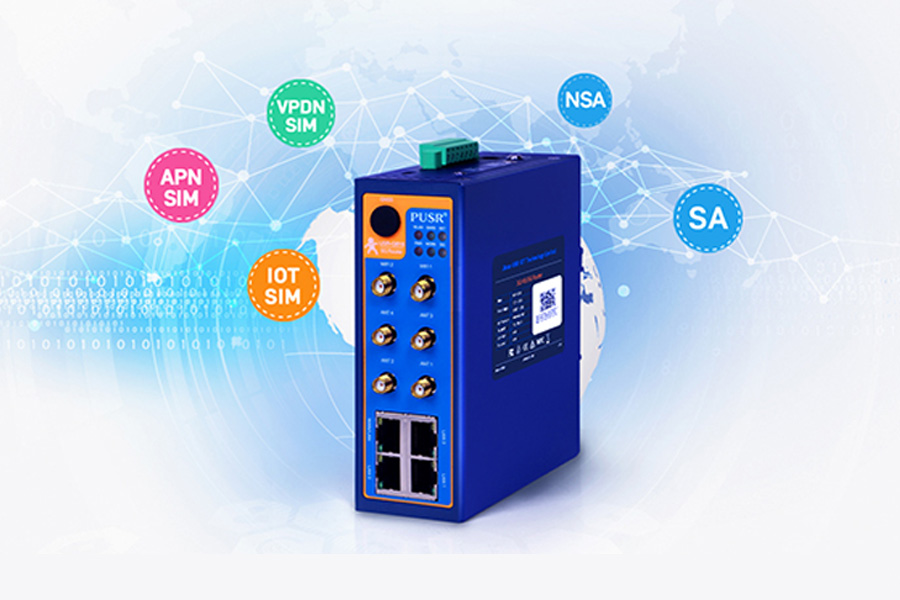In industrial settings, data transfer speed is not about downloading movies; it is about the velocity of operational intelligence. Slow or unreliable data connections create bottlenecks that hinder real-time control, delay critical insights, and reduce overall equipment effectiveness. Industrial 5G routers are engineered specifically to dismantle these bottlenecks, leveraging the fundamental advancements of 5g ap technology to achieve a step-change in data velocity. Their impact goes beyond mere theoretical bandwidth, delivering tangible speed improvements through a combination of radio innovation, network intelligence, and architectural shifts. Here are the top 10 detailed ways 5G routers improve data transfer speeds in industrial applications.
1. Leveraging High-Band Spectrum for Multi-Gigabit Throughput
The Improvement: Access to new, wide radio channels in high-frequency bands provides a fundamental increase in available bandwidth.
The Details: 5G operates in three key ranges: low-band (coverage), mid-band (balance), and high-band/mmWave (speed). Industrial routers capable of utilizing millimeter-wave (mmWave) spectrum can achieve multi-gigabit-per-second speeds, akin to a wireless fiber connection. This is transformative for applications like transferring large CAD/CAM files to production lines, streaming uncompressed high-definition video for quality inspection, and performing real-time backups of massive datasets from edge servers.
2. Advanced Carrier Aggregation for Bandwidth Pooling
The Improvement: Combining multiple frequency bands—from both 4G and 5G—simultaneously to create a single, faster data pipe.
The Details: A 5G router doesn’t use just one channel at a time. Using Carrier Aggregation (CA), it can bond together several component carriers from different bands. For example, it can combine a 20 MHz 4G LTE channel with a 100 MHz 5G mid-band channel and a 200 MHz mmWave channel. The router’s modem treats this aggregated block as one super-highway, dramatically increasing the total bandwidth available for a single data session, thus accelerating large data transfers.
3. Higher-Order MIMO and Beamforming for Spectral Efficiency
The Improvement: Transmitting and receiving multiple data streams simultaneously and focusing radio energy directly at the device.
The Details:
Massive MIMO (Multiple-Input, Multiple-Output): Industrial 5G routers and cell sites use arrays of 32, 64, or more antennas. This allows them to send and receive multiple unique data streams at the exact same time and frequency, multiplying the data capacity without needing more spectrum.
Beamforming: Instead of broadcasting a signal in all directions, the network uses advanced algorithms to focus the radio signal into a precise beam directed straight at the router. This concentrated energy results in a stronger signal (higher RSRP), less interference (higher SINR), and therefore higher data rates at the cell edge.
4. Network Slicing for Guaranteed Minimum Speeds
The Improvement: The ability to create a virtual, dedicated “slice” of the network with reserved resources for specific high-priority applications.
The Details: In a shared public network, a speed-intensive task might have to compete with other users. With network slicing, an enterprise can pay for a dedicated slice. For instance, a “Video Surveillance Slice” can be configured to guarantee a minimum of 200 Mbps upload speed at all times for a bank of security cameras. The 5G router, authenticated to this slice, is assured this level of performance, preventing other network traffic from degrading its data transfer speed.
5. Edge Computing for Data Reduction at the Source
The Improvement: Processing data locally on the router to transmit only a fraction of the original data volume.
The Details: The fastest transfer is the one you don’t have to make. Many industrial 5G routers now feature edge computing capabilities. Instead of a router streaming raw, high-frequency vibration data from a motor (which could be terabytes), it can run an analytics algorithm locally. The router would then send only the resulting metadata—e.g., “Motor 47B: Bearing fault predicted in 72 hours”—which is a few kilobytes. This reduces the data load on the cellular network by over 99%, effectively “freeing up” speed for other critical tasks.
6. Ultra-Low Latency for Accelerated Transactional Protocols
The Improvement: Drastically reducing the round-trip delay for data packets, which accelerates protocols that require handshaking.
The Details: Many industrial protocols (e.g., OPC UA, MQTT) and TCP itself require a “handshake” where packets are sent and acknowledged before more data can be sent. With 4G latency of 30-50ms, this back-and-forth creates a bottleneck. 5G’s ultra-reliable low-latency communication (URLLC) slashes this to 1-10ms. This means these protocols can complete their transactional conversations much faster, allowing data to flow more continuously and increasing the effective throughput of the application.
7. 5G Standalone (SA) Architecture with a Modernized Core
The Improvement: A cloud-native, fully 5G core network reduces data path complexity and enables advanced speed-enhancing features.
The Details: Early 5G (Non-Standalone, or NSA) relied on a 4G core, which added overhead. 5G Standalone (SA) uses a new, streamlined 5G core network. This architecture reduces latency and is a prerequisite for advanced features like network slicing and edge computing integration. An industrial router connected to a 5G SA network experiences a more direct and efficient data path, contributing to higher speeds and lower latency.
8. Dual Connectivity for Seamless Speed Boosts
The Improvement: Allowing a router to be connected to a 4G and a 5G base station simultaneously, using both connections for data.
The Details: In areas where 5G coverage is being built out, a router can use E-UTRA-NR Dual Connectivity (EN-DC). This allows it to maintain a primary connection with a 5G cell while using a 4G LTE cell as a secondary, anchor connection. The router aggregates the data from both links, providing a significant speed boost over using either technology alone and ensuring consistently higher speeds during network transition periods.
9. Robust Failover Preventing Speed Degradation to Zero
The Improvement: Instantaneous switching to a backup carrier to maintain data flow when the primary connection fails or slows.
The Details: Speed is zero when the link is down. Industrial 5G routers with dual or multi-SIM capabilities provide a powerful solution to outright failure. If the primary carrier’s network becomes congested, suffers an outage, or sees a severe drop in speed, the router can automatically and seamlessly fail over to a secondary carrier’s network in seconds. This ensures that data transfer continues without interruption, maintaining the operational speed of the application.
10. Optimized Hardware with Hardware-Accelerated Encryption
The Improvement: Offloading computationally intensive tasks from the main CPU to dedicated hardware, preventing the router itself from becoming a bottleneck.
The Details: High-speed VPNs and firewalls are essential for security but require significant processing power for encryption. If the router’s main CPU has to handle this, it can cap the maximum throughput. Industrial routers include hardware-accelerated encryption engines specifically for IPsec and other VPN protocols. This dedicated hardware processes the encryption/decryption at line speed, allowing the router to sustain its maximum cellular data rate without being slowed down by its own security processes.
Conclusion
Industrial 5G routers improve data transfer speeds through a powerful synergy of radio advancements, cellular router network-level guarantees, and architectural intelligence. They are not simply passive modems but active participants in optimizing data flow. By aggregating spectrum, focusing radio signals, guaranteeing resources via network slicing, and processing data at the edge, they overcome the traditional limitations of wireless communication. This results in a network that is not only faster in raw throughput but also smarter, more reliable, and capable of supporting the high-velocity data demands of modern, connected industrial operations.



